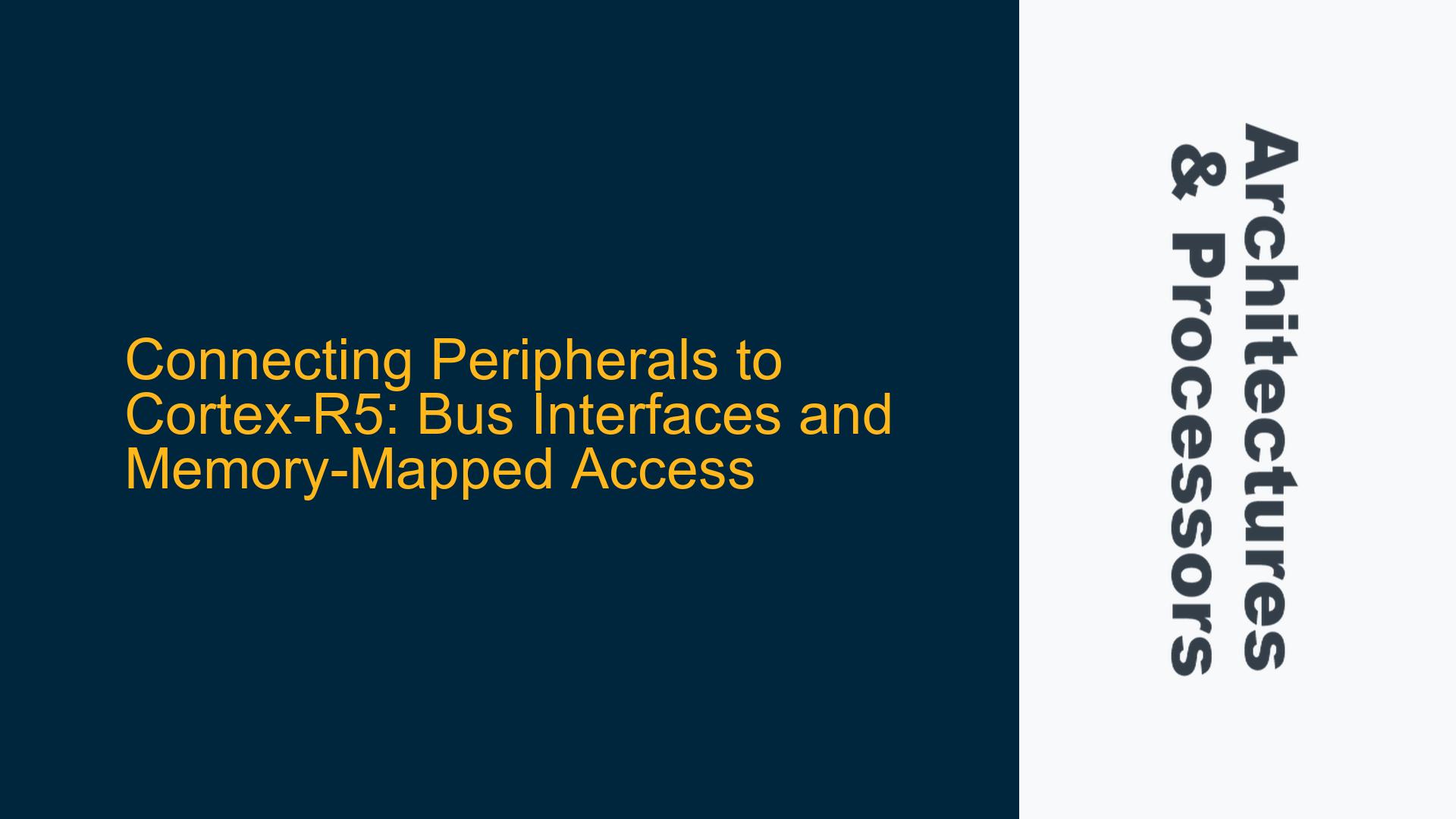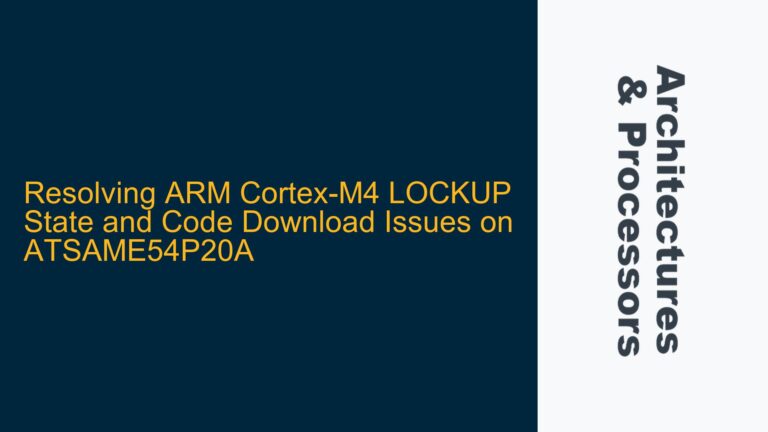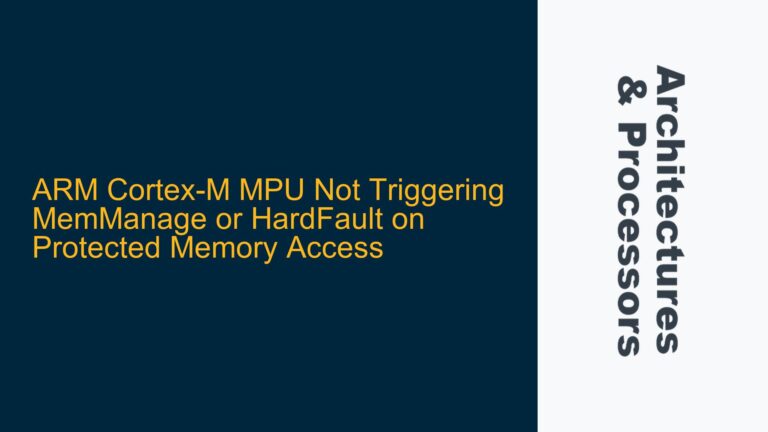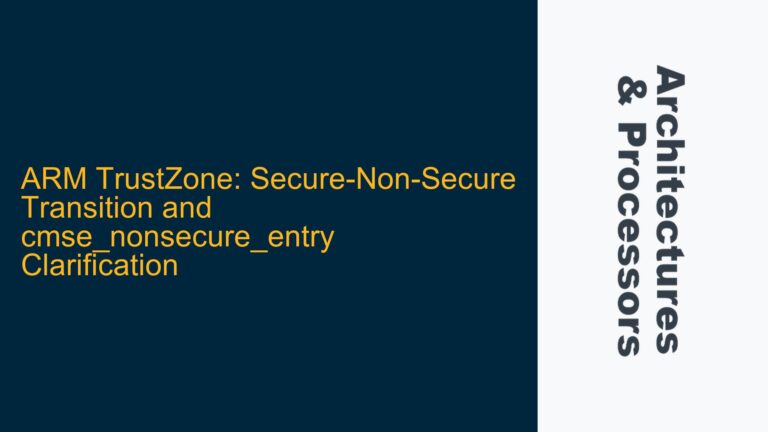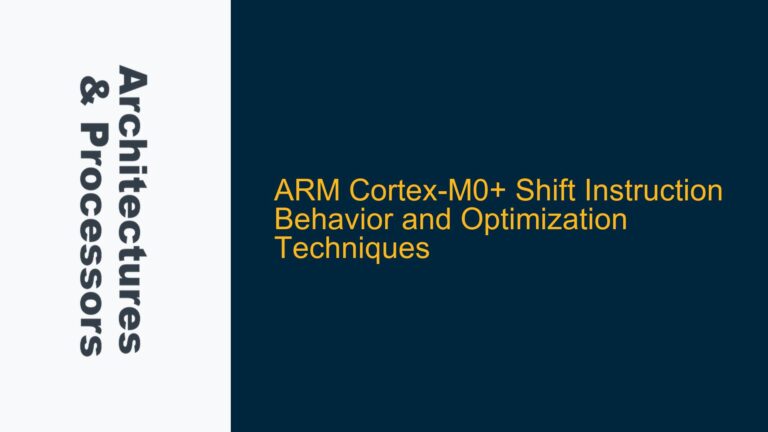Cortex-R5 Peripheral Integration and Bus Interface Architecture
The Cortex-R5 processor, a member of ARM’s Cortex-R series, is designed for real-time and safety-critical applications. It is typically integrated into System-on-Chip (SoC) designs, where it interacts with peripherals through a memory-mapped interface. The Cortex-R5 features multiple bus interfaces, including the Advanced High-performance Bus (AHB) and Advanced Peripheral Bus (APB), which are part of the ARM Advanced Microcontroller Bus Architecture (AMBA). These buses facilitate communication between the processor and peripherals, which are mapped into the processor’s memory space.
The Cortex-R5’s bus interfaces are critical for peripheral integration. The AHB is used for high-speed communication with memory and high-performance peripherals, while the APB is utilized for lower-speed peripherals. The processor accesses peripherals by performing load and store operations to specific memory addresses assigned to each peripheral. This memory-mapped I/O approach allows the Cortex-R5 to interact with a wide range of peripherals, from simple GPIOs to complex communication controllers like PCIe or USB.
In an SoC, the Cortex-R5 is connected to the memory system, which includes both on-chip and off-chip peripherals. On-chip peripherals, such as timers, interrupt controllers, and communication interfaces, are directly accessible through the AHB or APB. Off-chip peripherals, which may be hot-pluggable, are accessed through controllers like PCIe or USB, which are themselves memory-mapped devices. The processor interacts with these controllers, which in turn manage the communication with the actual peripherals.
Memory-Mapped I/O and Peripheral Controller Interaction
The primary method for connecting peripherals to the Cortex-R5 is through memory-mapped I/O. Each peripheral is assigned a unique address range within the processor’s memory space. When the Cortex-R5 performs a load or store operation to an address within this range, the operation is directed to the corresponding peripheral. This approach simplifies the software interface to peripherals, as they can be accessed using standard memory access instructions.
However, the interaction between the Cortex-R5 and peripherals is not always straightforward. The processor must be aware of the specific requirements of each peripheral, such as data width, endianness, and access timing. Additionally, peripherals may have multiple registers, each with its own address offset within the peripheral’s address range. The Cortex-R5 must correctly interpret these offsets to access the desired register.
Peripheral controllers, such as PCIe or USB controllers, play a crucial role in managing communication between the Cortex-R5 and off-chip peripherals. These controllers are themselves memory-mapped devices, and the Cortex-R5 interacts with them using load and store operations. The controllers handle the low-level details of communication with the actual peripherals, such as protocol handling and data transfer. The Cortex-R5 must configure these controllers appropriately, typically through a set of control and status registers, to enable communication with the peripherals.
Implementing and Debugging Peripheral Connectivity in Cortex-R5 Systems
Implementing peripheral connectivity in a Cortex-R5-based system involves several steps. First, the memory map of the system must be defined, assigning address ranges to each peripheral and peripheral controller. This requires careful consideration of the address space available and the requirements of each peripheral. The Cortex-R5’s memory protection unit (MPU) can be used to enforce access permissions and prevent unauthorized access to critical peripherals.
Once the memory map is defined, the Cortex-R5 must be configured to access the peripherals correctly. This involves setting up the processor’s bus interfaces and ensuring that the correct address decoding logic is in place. The Cortex-R5’s bus interfaces must be configured to match the timing requirements of the peripherals, which may involve adjusting bus clock speeds or inserting wait states.
Debugging peripheral connectivity issues in a Cortex-R5 system can be challenging. Common issues include incorrect address mapping, improper bus configuration, and timing mismatches between the processor and peripherals. Tools such as logic analyzers and bus analyzers can be used to monitor the bus traffic and identify issues. Additionally, the Cortex-R5’s debug features, such as breakpoints and watchpoints, can be used to trace the execution of software and identify incorrect peripheral access patterns.
In conclusion, connecting peripherals to the Cortex-R5 involves a combination of memory-mapped I/O, bus interface configuration, and peripheral controller management. Proper implementation requires careful planning of the memory map, correct configuration of the bus interfaces, and thorough debugging to ensure reliable operation. By understanding the architecture of the Cortex-R5 and the requirements of the peripherals, designers can create robust and efficient embedded systems.
